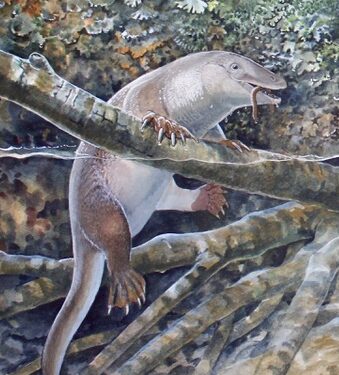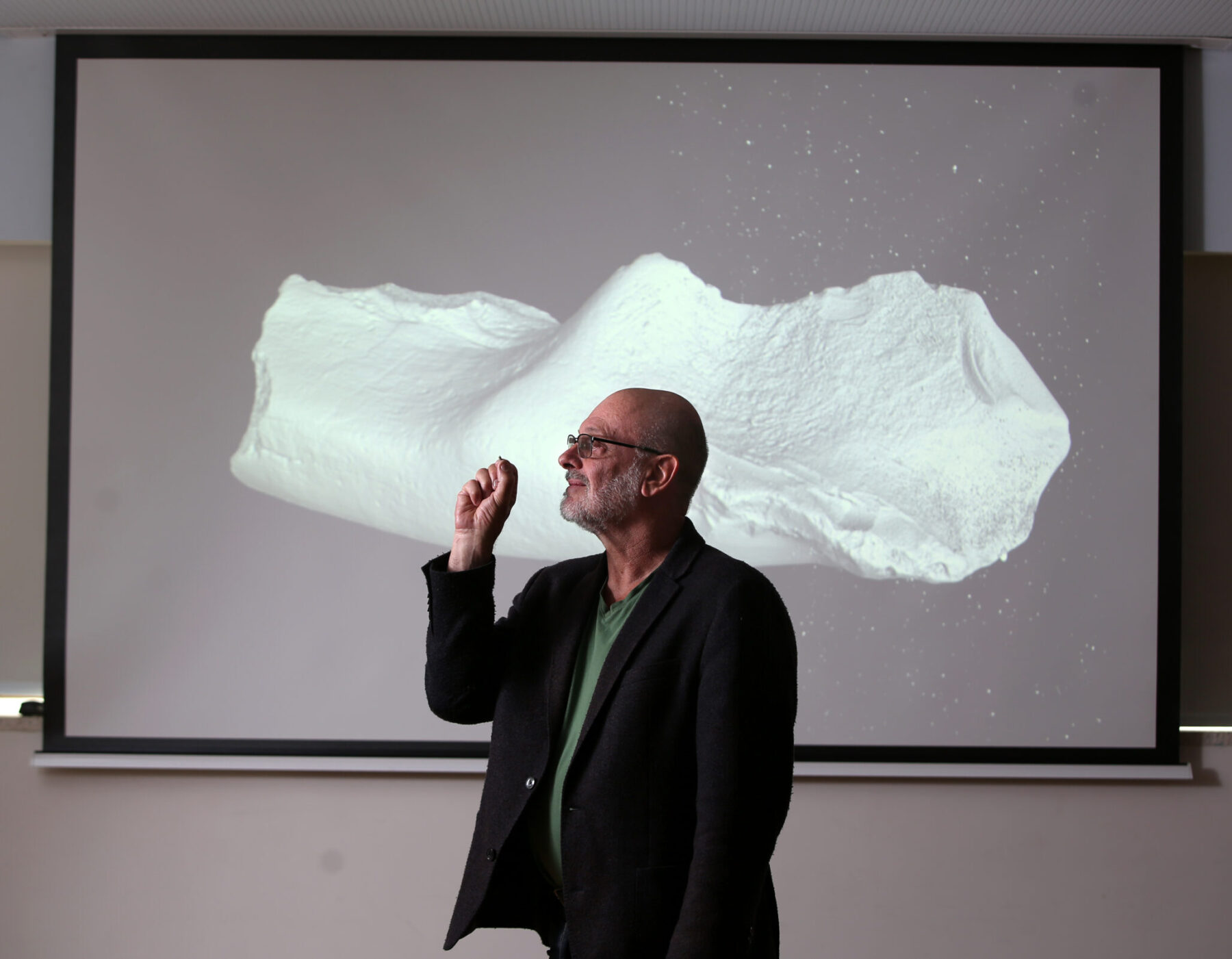Is the ‘echidnapus’ the Rosetta Stone of early mammal evolution?

Research that was started during COVID lockdowns by a crack team of fossil experts, led by world-renowned Australian biologist, Professor Tim Flannery, has revealed yet another internationally significant discovery, with the identification of an animal that looks like a cross between a platypus and an echidna – possibly an ancestor of both.
The work was published this week in the journal Alcheringa.

The weird new species, dubbed the ‘echidnapus’ (Opalios splendens), is just one of several remarkable creatures identified from a batch of previously overlooked fossils found in the Australian Museum in Sydney.
Also of note is evidence of a 100-million-year-old platypus that’s almost identical to the modern platypus, a species that was previously thought to have only arisen some 50 million years ago. It’s been assigned the new genus name of Dharragarra, which means platypus in the Gamilaraay, Yuwaalaraay and Yuwaalayaay languages of the First Nations people from the Lightning Ridge area of north-western New South Wales.
“There are a number of big takeaways from this work,” Tim told Australian Geographic. “One is that we hadn’t really suspected before that there was a period in Australia’s history where there was a great diversity of monotremes, [at a time] when there were no other mammals living on the continent.
“Today, Australia is known as a land of marsupials, but discovering these new fossils is the first indication that Australia was previously home to a diversity of monotremes. It’s like discovering a whole new civilisation.”
Monotremes are egg-laying mammals, and are only represented today by the echidna and the platypus. Most modern mammals, such as humans, are in the placental mammal group. Marsupials, which survive mostly in Australia and nearby islands, make up the third group of mammals.
This new work has now identified six monotreme genera surviving some 100 million years ago (mya), all roaming across the landmass that would ultimately become Australia.
The fossils have come from Lightning Ridge, which is well-known for its fish and reptile fossils.
“Lightning Ridge was then [100mya] at 60 degrees south, so it was a very polar environment,” Tim said. “The earliest monotremes we’ve got – which look like they are the beginning of the group – are about 126 million years old and are from southern Victoria.”
The ‘echidnapus’ is just one of six remarkable monotremes identified to have been roaming 100 million years ago across the landmass that would ultimately become Australia.
Illustration credits: Peter Shouten
This new work shows that within 26 million years of when monotremes were thought to have arisen, the group was rapidly evolving.
“By 100mya the group had really started to diversify. We’ve got pig-sized species, rat-sized species, and everything in between – some terrestrial, some aquatic. There’s quite a diversity of types,” Tim explains.
It means that Australia experienced a kind of ‘Age of Monotremes’ during the first part of the late Cretaceous, when dinosaurs ruled the Earth and placental mammals were lurking around in the form of tiny, shrew-like creatures.
It’s a period referred to as the ‘Cenomanian’ – the earliest age of the Late Cretaceous Epoch.

“This is a once-in-a-lifetime discovery,” Tim said. “In all the time that people have been looking at fossils from Lightning Ridge, previously they’ve only found four jawbones of mammals, and here we have five new jawbones – so, more than double the number of specimens, which is hugely enlightening.”
“[These fossils] came to the museum and were then somehow lost – no-one took much notice of them or realised how important they were. Then between lockdowns there was a period when the museum was open and I went in and accessed a particular drawer and there were these amazing fossils – they were kind of like a Rosetta Stone to understanding the past.”
The Rosetta Stone is considered one of the British Museum’s most important objects because it holds the key to understanding Egyptian hieroglyphs.
The prestigious team, led by Tim, which has been crucial to unlocking the meaning of the recent Australian Museum find, includes Dr Tom Rich, Senior Curator of Vertebrate Palaeontology at Museums Victoria Research Institute; Professor Kris Helgen, the Australian Museum’s Chief Scientist and Director; Professor Patricia Vickers-Rich, Honorary Researcher at Museums Victoria Research Institute; Dr Matthew McCurry, a vertebrate palaeontologist and functional morphologist and palaeontologist; and Dr Elizabeth Smith, a palaeontologist, author and artist.








